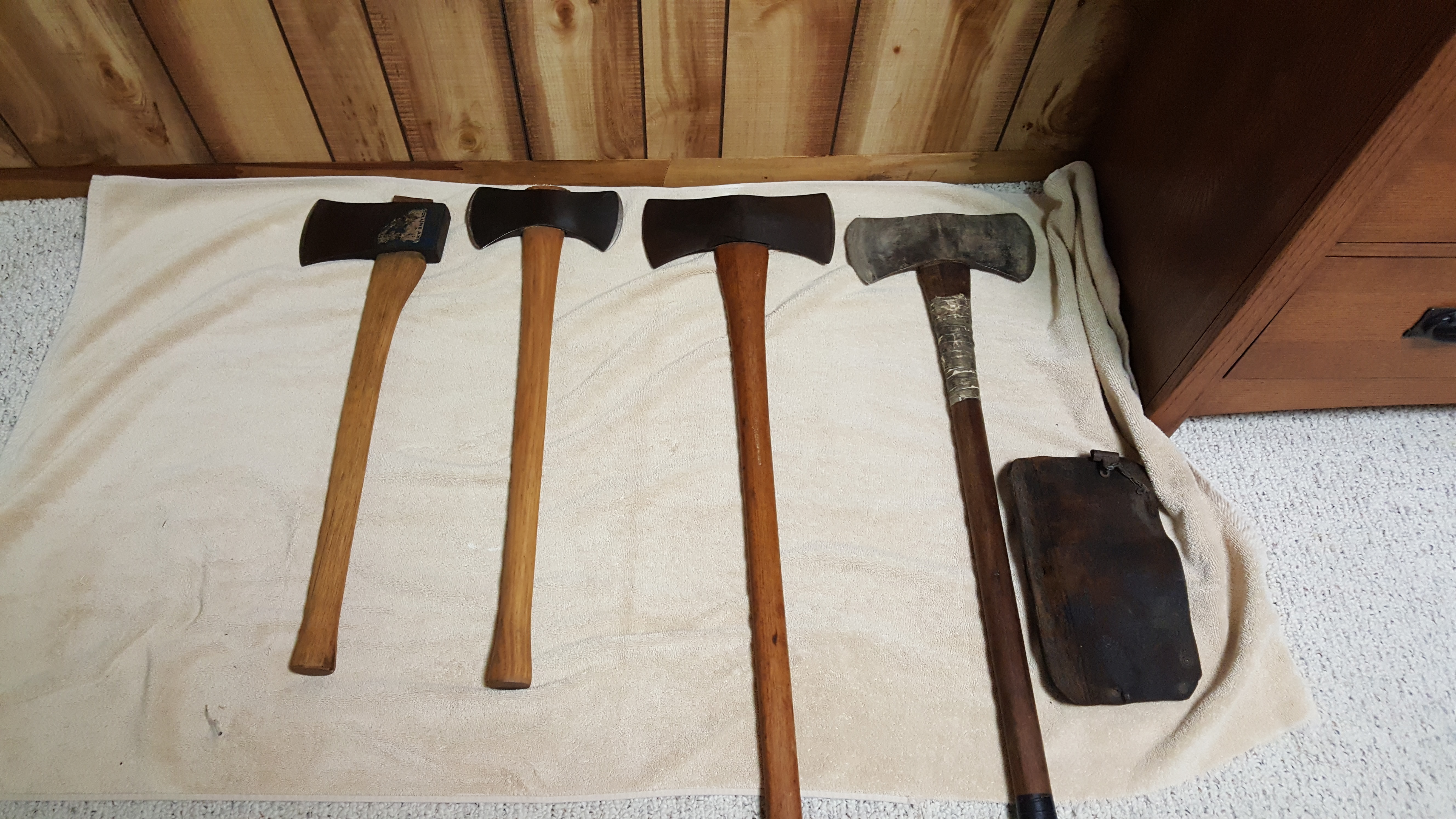You could call it 'Dave' if you want! Lots of different terms for similar things.So, is that what the little Collins I just finished is? A fellers ax? I called it a boys ax because it was so short, but it has about a 4 pound head. The handle is 24 1/2 inches and the total weight is 5 pounds.
I assume that a 'boy's axe' would be a scaled down version of a typical, full sized (3.5 pound head) axe, with a shorter, curved handle and lighter head.
A 'feller's axe' seems to have a shorter, straight handle, and a larger, heavier (4 to 5 pound) head. I have seen similar axes called a 'miner's axe'; presumably due to cramped spaces in mines.

(photo from Bailey's web site)
Philbert

























































